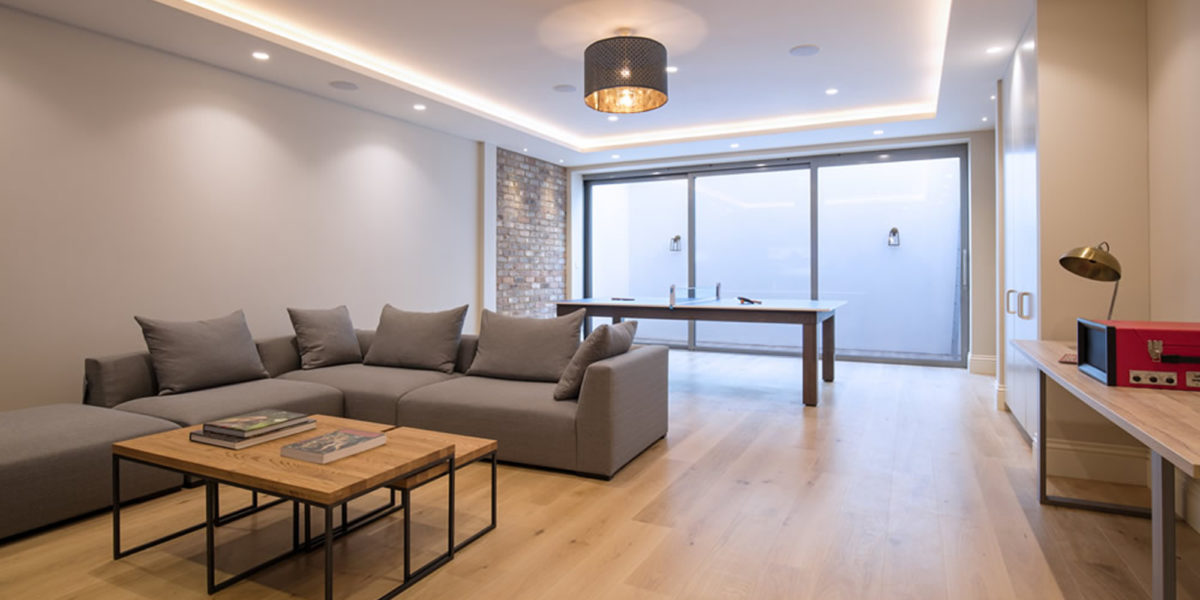While drainage, ventilation and damp-proofing are important factors in basement design they are technical challenges for which there are now routine solutions, and those solutions are largely invisible. Lighting is different – it cannot be invisible. Far from being an afterthought, consisting of just wires and light bulbs, lighting should be intrinsic to the entire design. In order to be comfortable, healthy and appealing for day to day living, the entire design of basement living spaces often revolves around the lighting solution.
Light wells and reflective surfaces
Your options will, of course, depend on the space allowed by streets and buildings above and will be a basic consideration in your initial architectural design. Remember that admitting light directly from above can work both inside and outside a building. Even small light wells can admit a surprising amount of natural light when combined with the right materials and colour schemes.
When there is enough yard space within the plot, basement extensions beneath a garden or car parking area can connect to large basement level outdoor areas. Not only is this a source of light and fresh air, but it means that rear access from the existing building at ground level is preserved (there is a great examples at https://www.noblestructures.co.uk/).
Colour temperature
Electric lighting should be chosen to merge rather than contrast with natural light. This can be done by selecting lighting that emits at a soft natural wavelength. If you’ve ever been blinded by an approaching cyclist with bright LED lighting you’ll appreciate this is something a lot of modern lighting does not do. Bright lights of the wrong kind cast surprisingly little usable illumination. If your development does not have access to natural illumination at all, comfortable naturalistic lighting becomes even more important.
By avoiding directly exposed bulbs or strip lights an effect can be achieved in which the occupants will easily forget they are underground at all. Indirect illumination of walls and work surfaces from lights concealed behind a pelmet achieve a more natural effect than a central ceiling light. They are also more energy-efficient than lights that radiate into empty space. A similar trick can be achieved by casting light directly across a ceiling using a horizontal “pelmet” (see the development above). In both cases, it is important to achieve a flat consistent distribution of the light.
Err on the side of excess
Lights can be dimmed or turned off but they can’t be turned on if they aren’t there. Altering a circuit to take more outlets later can require calling back both the builders and electricians to route more wiring, hack new mountings, and redecorate.
Dimmer switches are a blessing, allowing you to fine tune the effect you want at different times of day and night. Make sure your electrician connects different types of lighting to different switches so you can modify the balance between them. There are sophisticated ways to modify, or pre-program, this balance; one is to use a digital control wall box with mood presets, or another is to have them connected wirelessly to a smartphone or other handheld controller.

